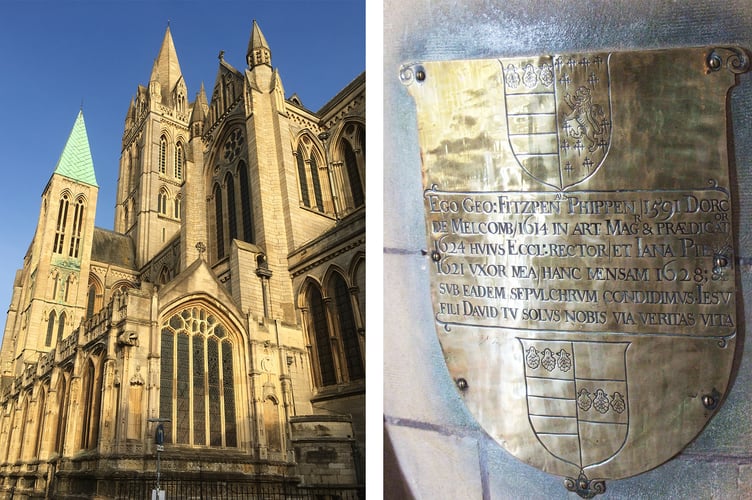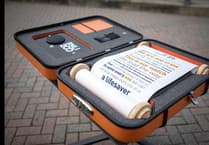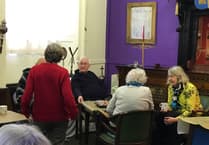Churches have always been at the heart of our communities. They witness crucial milestones – baptisms, weddings and funerals – and act as store houses for our collective memories.
The oldest part of Truro Cathedral, St Mary’s Aisle, dates from the 1500s. The history of Cornwall is literally embedded in its building materials (locally-mined copper, Delabole slate and Pentewan stone) and its windows, ceiling bosses and monuments give tantalising glimpses of some of the biggest personalities in Cornish history.
Which is why, when David Thigpen from Idaho wanted to trace his Cornish roots, he contacted the cathedral.
David’s family have been in the USA for generations. They are part of the Cornish diaspora – the descendants of hundreds of thousands of Cornish people who emigrated to North and South America, Australia and South Africa. Like modern day migrants into Europe, they wanted to find a better life, and many were driven by bitter necessity.
Gruelling hardship, long hours, danger and disease were the daily lot of many working people, especially miners. Economic depressions spelt catastrophe and the risk of starvation.
For instance in the 1870s, 132 of the 230 working mines in Cornwall and Devon shut down in the space of only three years, throwing thousands out of work. And between 1861 and 1900, a shocking 45 per cent of young Cornish men aged 15-24 emigrated.
Little wonder that in May 1878, fundraisers for the new cathedral planned for Truro cited providing work for destitute miners as a good reason to support their ambitious project.

David Thigpen’s journey back to his roots brought him to St Mary’s Aisle. A direct descendant of Owen Fitzpen, or Phippen, born in the 1580s, he was overwhelmed to be able actually to run his fingers over the man-sized slate tablet that records his ancestor’s incredible exploits.
A sailor, Fitzpen had been captured by Turks in the Mediterranean in 1627, but led a prisoners’ revolt, seized their vessel and sailed it to Spain, where he sold it for £6,000 (worth about £1.3 million today). He returned triumphant to his brother, George Phippen, who happened to be the Rector of St Mary’s parish church in Truro – later re-named St Mary’s Aisle.
It was George who wanted to ensure that a record of Owen’s adventures survived, in the form of the slate tablet now stored in the crypt. You can still see his own brass plaque in St Mary’s Aisle in the shape of a shield with an inscription in Latin and his family’s coats of arms.
Still connecting Cornish people everywhere, Truro Cathedral is on Youtube, Facebook, Twitter and Instagram @TruroCathedral and is open daily, free (donations welcomed).
And if you have a story to tell about how your own family emigrated, and what became of them, The Voice would like to hear it.





